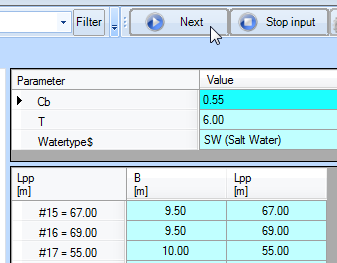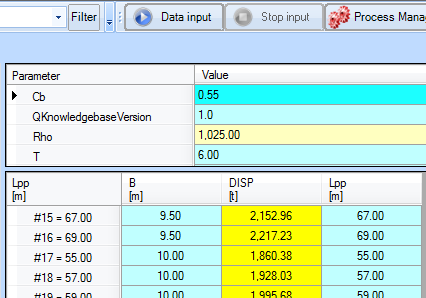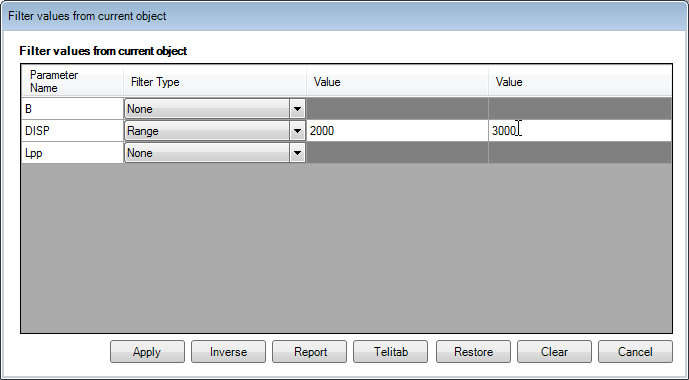Page History
...
Our objective is to generate a dataset of systematically varied ships that meet the design criteria.
2 Before
...
you start
Before starting with your knowledge engineering, please make sure you are actually using the knowledge engineering user level and you have Quaestor configured in the most convenient layout.
...
The constraint is now added, and a parameter named Watertype$ has been created. The $ at the end of the parameter name makes sure Quaestor recognizes it as a String value, and the dimension Str is automatically assigned (see also Quaestor syntax). We You have to assign a Determined-by value to make it a valid parameter.
...
Note that the input of Watertype$ consists of a dropdownbox, which we you created above:
After providing the data you have to press the Next button to continue. The actual calculation is started now and because this is a very simple example, the final state is alost immediately shown:
...
You will see that the single value input is still in the list and the multi case values are in the table part of the Workbase. Press the Next button to continue.
The new solution is now created. The fixed values are again shown in the right hand side of the workbase. The varying parameters (B and Lpp) and the corresponding solution for DISP are shown in the lower part. Each row is a different case, identified by a case number(#1, #2, etc.), see figure 16.
Figure 16 Multiple case solutions are shown in the workbase, each row is a different case
What does the Case matrix question mean? Note that the variations of B do not correspond to the variations of Lpp: there are 5 values for B and 8 values for Lpp. If we you would have answered No to the Case matrix question, five variations of B would have been made, each one with the corresponding value of Lpp (the last 3 Lpp values would be omitted). In that way, there would be only five cases. As we you answered Yes to the question, all possible combinations are considered, which results in 5*8=40 cases. You can easily notice the difference by creating a new solution with the same input values, but now answer no to the case matrix question.
| Info |
|---|
...
Ranges can be defined in multiple ways:
|
...
|
...
|
...
|
...
10 Manage solutions
Our As it is now, the multiple case solution table is sorted by the breadth of the ship, as shown in figure 16. Suppose we. Now suppose you'd like parameter Lpp to be the leading parameter in this table.
...
- In the knowledge browser, select the
...
- parameter
Lpp. In the
...
- Properties window, scroll down to the row Output to, and select HEADER
...
- . Now, refresh the table of the multiple case solution by clicking another solution, and then again the multiple case solution. The table is now leaded by Lpp.
Figure 17 By selecting Output to HEADER, the parameter will 'lead' the multiple case solution table
A lot of cases in our solution don't meet the design criteria: a displacement between 2000 and 3000 ton. We could have fixed this by adding a constraint to DISP, but another way is to use a filter in the solution table.
...
- In the workbase, select the last (multiple case)
DISPsolution, and click
...
- the Filter
...
- button. The
...
- Filter window shows. For
DISP, select Range as filter, fill in 2000 for Lower bound and 3000 for upper bound
...
- . Click the Apply button.
Figure 18 With a filter, cases that do not fulfill the filter conditions can be made invisible
Now, only the cases for which 2000<DISP<3000 2000 < DISP < 3000 are shown in the table. Our objective has been completed: we build The objective of this tutorial is now completed: you built a dataset of systematically varied ships that meet the design criteria.
...






